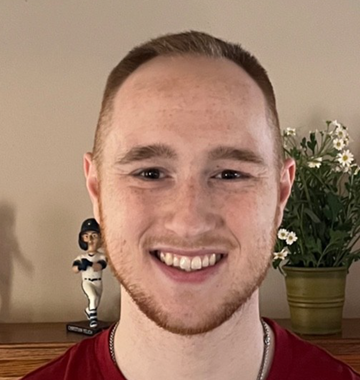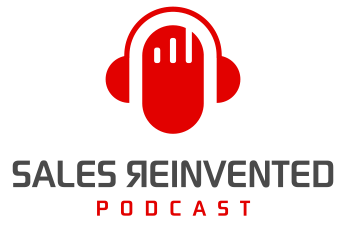Episode #417: Tyler Hickey

Meet
Tyler Hickey
Tyler Hickey is an Account Executive at Branch, a late-stage startup that helps companies grow their mobile apps. He was promoted from SDR to AE in only 10 months after never missing quota and applying other strategies to stand out within the company.
Our Mission Is To Change The Negative Perception Of Sales People
Our Vision Is A World Where Selling Is A Profession To Be Proud Of
Tyler Hickey is a science guy. He tried to make cold-calling a science. Eventually, he realized there’s an art to it as well—and you have to master both. If you start by mastering your scripts, learning frameworks, and digging deeper into objections, you’ll be well on your way. Tyler shares his trade secrets in this episode of @SalesReinvented.
Outline of This Episode
- [0:45] What is cold-calling? Is it still relevant?
- [2:31] Is cold-calling an art and a science?
- [4:11] How Tyler prepares for cold-calling
- [5:15] Opening lines and techniques
- [6:07] How Tyler keeps cold-calling engaging
- [7:57] Indispensable tools and technology
- [10:03] Tyler’s top cold-calling dos and don’ts
- [12:49] How Tyler handles objections/rejections
How Tyler prepares for cold-calling
Tyler does his research ahead of time. When he makes a call, he puts the prospect’s LinkedIn profile on one screen and any other pertinent information is on the other. He knows exactly what he’ll say when they answer the phone.
You want to call the people who will pick up the phone. So Tyler always focuses on improving his connect rate (by using a tool like Phone Ready Leads). He also looks at the number of people he’s booking a meeting with.
He also documents every call he makes. Was the number valid? Did he get to the right person? Did they answer? That will inform whether or not he calls them again, when he calls them again, etc. If someone answered in the past, they’re more likely to answer again.
How Tyler keeps cold-calling engaging
Tyler will talk as long as the prospect lets him talk. The more time they commit to, the more engaged and excited they are about moving forward. If they want to continue through a discovery call, Tyler will go through the process.
When it’s time to schedule next steps, he will. But he’ll talk for 20–30 minutes if necessary. Why? Because those calls almost always end in meetings.
Tyler always has his script in front of him at all times. He follows the script conversationally (and doesn’t outright read it). He believes that you’ll know when to move away from the script and turn to a conversation.
Tyler’s top cold-calling dos and don’ts
Tyler lists a few other things you need to keep top of mind when it comes to cold calls:
- Sort your leads into buckets: Connect-validated, valid numbers, questionable numbers, and invalid numbers.
- Speak slowly. Reps talk fast because they’re nervous, which is a recipe for disaster.
- Don’t come off arrogant. Be confident with a hint of curiosity.
- Don’t try a new opener every call. It leads to disaster.
- Don’t open a call by pitching. It leads to a lot of hangups.
- Ask the prospect for their email address when they book a meeting. You don’t want to send the invite to the wrong email address.
How Tyler handles objections/rejections
Tyler has two separate frameworks for objections and rejections. One is acknowledging the objection and asking a question to dig deeper. The other is acknowledging the objection and labeling it to have them correct you or say you’re right.
Using these frameworks doesn’t require you to memorize a way to handle every objection that comes your way. It gives your brain a framework to reference.
Tyler spoke with a prospect about their mobile app. The prospect consistently said their app wasn’t a priority (nor was he familiar with it). But with every objection, Tyler asked a question. By the end of the 25-minute call, they booked a meeting.
You can’t be combative. Contradicting someone doesn’t work. Instead, you must dive deeper into the objection.
Connect With Paul Watts
Audio Production and Show notes by
PODCAST FAST TRACK
https://www.podcastfasttrack.com
Learn More About Tyler Hickey
What was a pivotal moment or experience in your career that shaped your approach to cold calling, and how did it change your perspective or strategy? The most pivotal moment for me is when I realized that cold calling was the channel I struggled the most at. This inspired me to really double down on getting better and I eventually became the go-to cold calling resource at the company.
Can you share a specific tactic or approach you’ve used in cold calling that significantly increased your success rate? Please provide a brief example or case study. This is a bit counterintuitive, but I think one of the biggest drivers of my success has been asking for the meeting upfront. For example, after I get permission to tell them why I called I say the following, “Great, so the purpose of my call is to find some time on your calendar to introduce my company when I’m not calling you out of the blue…do you have some time next week?” This leads to them asking what my company does which is essentially an invitation to pitch. It’s a pattern interrupt that’s worked extremely well for me.
Cold calling often comes with its set of challenges and rejections. Can you share a particularly tough challenge you faced while cold calling and how you overcame it? My first cold call conversation ever sticks in my brain. I was so nervous that I didn’t even get through my pitch. I just stumbled along and eventually hung up. It was incredibly embarrassing and I immediately started wondering if this was something I could do on a daily basis. However, I stuck with it and eventually found enjoyment in the uncomfortability of it. It’s like the sales version of going to the gym.
What are the top three tools or resources (e.g., software, books, training programs) you consider essential for someone looking to improve their cold calling skills and outcomes? “The Art of Cold Calling” by Townsend Wardlaw is a good, short ebook where the tactic of asking for the meeting upfront comes from. Phone Ready Leads is my favorite software tool for cold calling as they essentially vet out your numbers and tell you which ones to call. This substantially improves connect rates. And then “Outbound Sales, No Fluff” by Ryan Reisert and Rex Biberston is another good one. Ryan was my cold calling coach for a bit and he’s the best cold caller I’ve ever seen.
How do you foresee the practice of cold calling evolving in the next few years with advancements in technology and changes in buyer behavior? What advice would you give to sales professionals to stay ahead of the curve? I think the evolution of cold calling depends mostly on salespeople. I think the biggest reason connect rates are so low these days is because buyers have grown to distrust sellers. The stereotype is that sellers only look out for themselves and their commission. If we as an industry can make the shift from caring more about helping our prospects and less about helping ourselves, I think cold calling will only become more a more powerful channel over time.
Share This Episode, Choose Your Platform!
